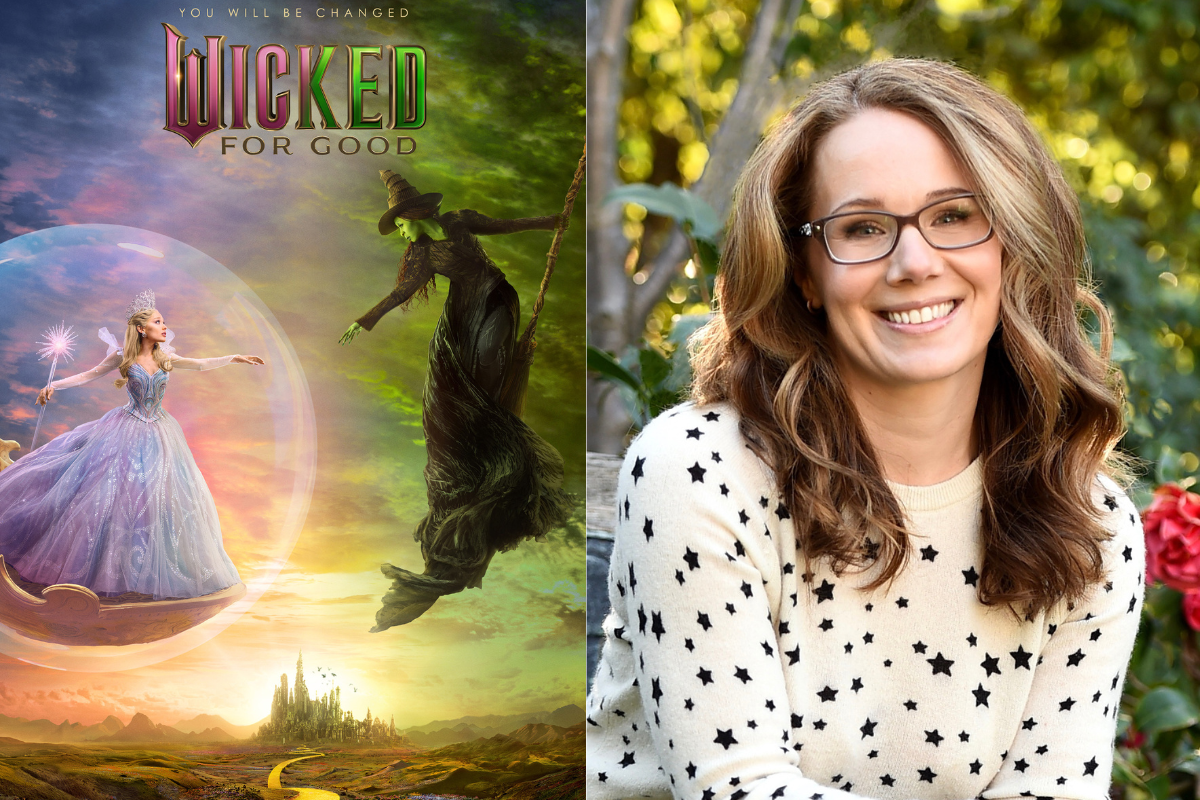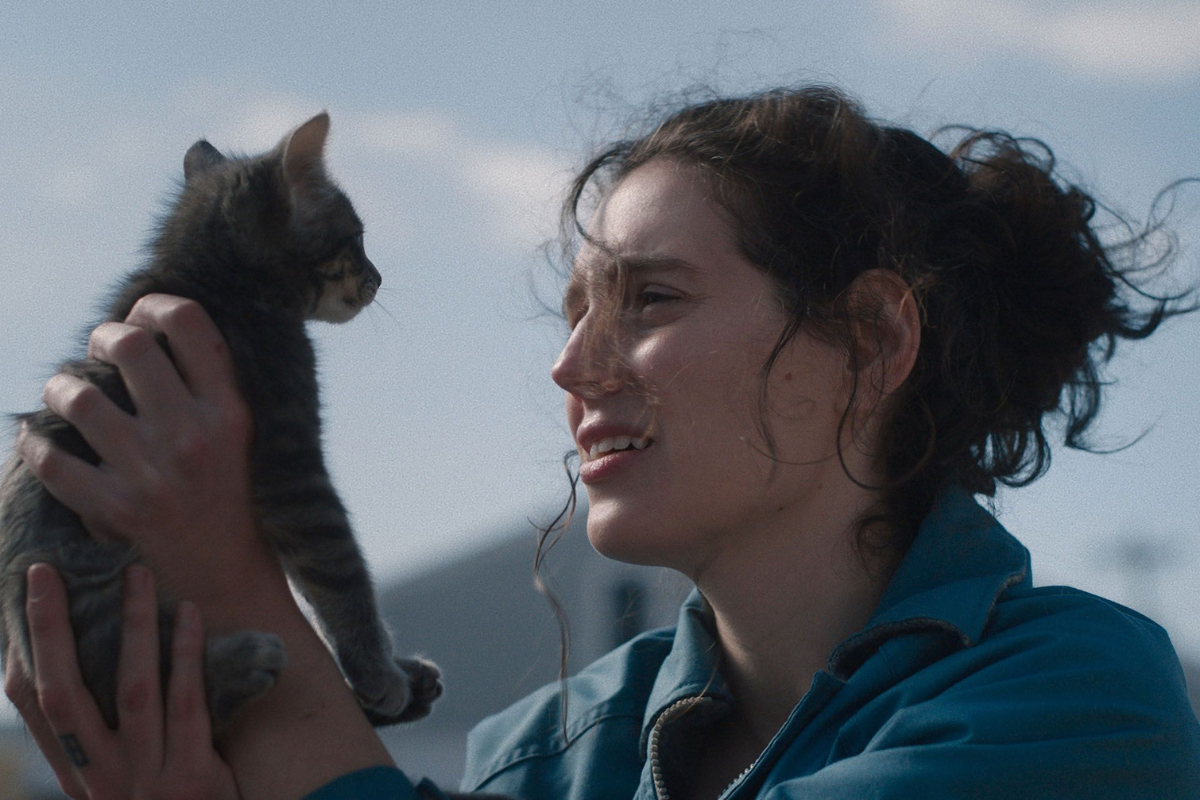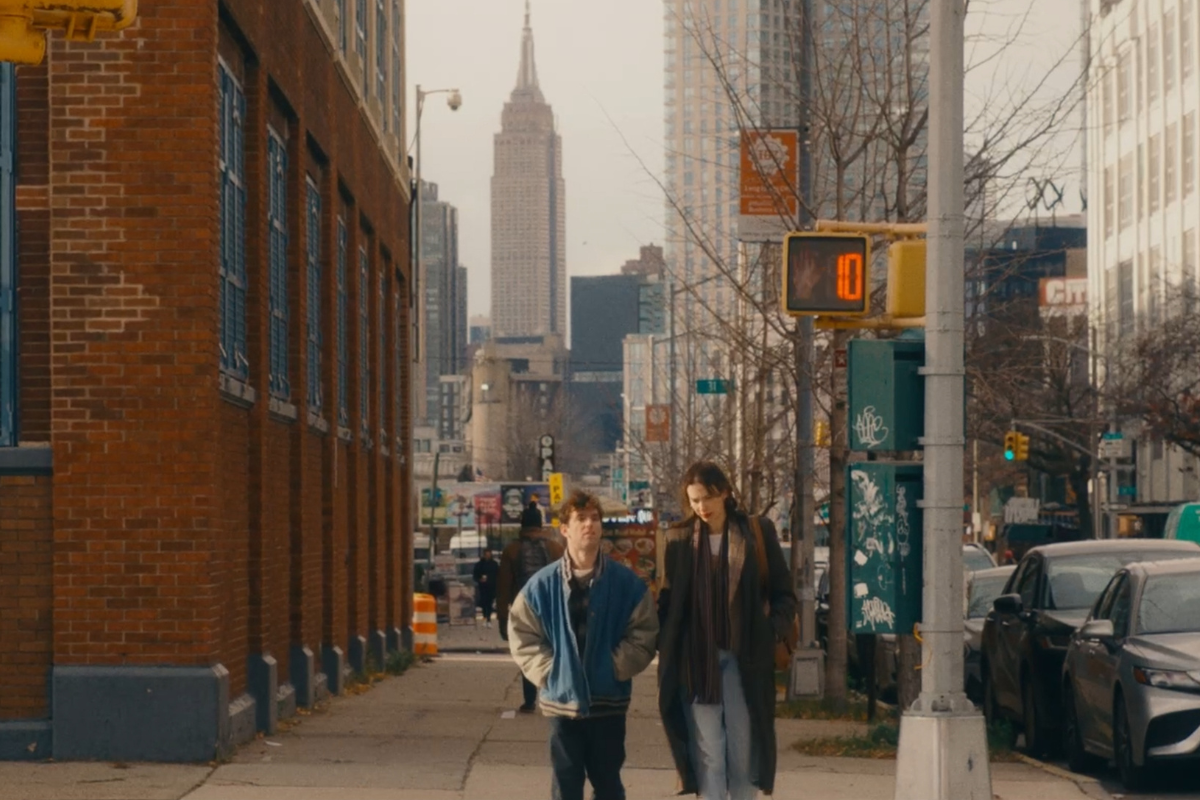INTERVIEW: ‘Vanquish’ Writer/Director George Gallo
Script’s Editor, Sadie Dean, interviews ‘Vanquish’ writer/director George Gallo, in which he gives incredible insight from a director’s perspective on how to convey emotion and tone through color palettes, camera angles to point-of-view, and much more!
Vanquish is one of those action-thriller flicks that gives you much-anticipated action set pieces, explosions, motorcycle chases and comedy beats all in one go.
From the director of Double Take, Middle Men, and The Poison Rose comes this stylish, glossy action-thriller starring Morgan Freeman (Se7en) and Ruby Rose ("Orange Is the New Black") that shows what desperation can drive a person to do. A mother, Victoria (Rose), is trying to put her dark past as a Russian drug courier behind her, but retired cop Damon (Freeman) forces Victoria to do his bidding by holding her daughter hostage. Now, Victoria must use guns, guts, and a motorcycle to take out a series of violent gangsters — or she may never see her child again.
My conversation with George Gallo is one for the books, where it felt like I received a special one-on-one mini master class on visual storytelling from script to screen. George gives incredible insight from a director’s perspective on how to convey emotion and tone through color palettes, camera angles to point-of-view.
This interview has been edited for content and clarity.
Sadie Dean: Many may not know this great fact about you, but you're a successful painter. As a visual artist, how does that inform your work as a director, and most importantly as a storyteller?
George Gallo: You know for me painting is telling a story. Obviously, you know, you have to try to entertain, but also be very concentrated in trying to tell the story in one image. Whereas in a movie you have a succession of images serving a story idea, but it's all very interrelated, you know, camera placement is definitely the same thing as a point of view on a painting. What are you favoring? Are you favoring the sky? Are you favoring the people? Where do you place the horizon line? It all informs us about the people that we're looking at in a movie, and certainly the color palette you’re choosing, and the type of lighting. Is it a kind of a stream lighting source? Is it a soft lighting source? These things all conjure up emotions in terms of how we view the people. So, the first thing I asked myself is, ‘What am I trying to say about these people? What am I trying to convey about these folks?’ And then that instantly informs the color palette, the lens choice the camera angle, all that stuff.
Sadie: I’m a fan of the imagery that you put in place in your movie Vanquish, especially with the Victoria’s flashbacks, it’s very picturesque. I feel like you can take any of those frames and that's a painting on its own.
George: Thank you so much. I've been doing a lot of comedies, you know, in terms of a comedy, you don't get to play around as much because you're trying to find humor and a lot of times, when you're doing a comedy, you don't want to make a movie that becomes distracting visually to fight the humor. I've been itching to do something like this for years and I never got the opportunity, because I love those movies. There’s an old gangster movie, an American film called The Friends of Eddie Coyle, Peter Yates directed, I just I love those old school kind of gangster movies, they're all very stylistic in their approach and it was really great to get to do those things. I've never really gotten the opportunity to go this far, you know, as a filmmaker. It was very liberating and a lot of fun.
Sadie: What sparked the story idea for Vanquish?
George: Well, it started with another writer Sam Bartlett, he wrote the first draft, and I read it. And when I read it, I thought of Morgan Freeman who’s my buddy and I called Morgan and I asked him, “Do he want to do this?” He said, “Sure, if you're doing it, I’ll do it.” This is our third movie together. And, and then I started to tailor the screenplay more for him. And the Ruby Rose character he wrote in the original the script, she was a little more of a victim, I would say. I wanted to make her both the victim and a perpetrator. The first thing that I had in mind was I wanted to make the movie sort of do two things. I wanted it to be in a slightly alternate universe, you never really know what city you're in, and then you will probably notice there are no extras anywhere, it was always like these people populating this very sort of bleak landscape. And at the same time, I wanted to keep it somewhat believable. A lot of times in an action movie, if you’re not careful, you've got characters doing things that are so ridiculous that you don't take it all that seriously. By the end of the movie without giving it away, there's quite an emotional payoff. In order for that to resonate, the mugging had to stay somewhat believable throughout the movie. So, you know, Ruby Rose as an actor, clearly can pull off that tough thing that she does.
Sadie: One hundred percent. And Morgan Freeman being so terrifying just from a wheelchair.
George: Yeah, he's, he's so good. I mean obviously, Morgan Freeman is good [laughs]. He commands so much respect and he’s so terrific. And I think he's so wonderful in this movie, in that it's a very solid performance. He never raises his voice once. He’s just rock solid, he's like a laser, and he really is, you know, manipulating the situation. He's like a puppeteer and Ruby’s, unfortunately on the strings through the whole movie. And they’re just wonderful together. Look, a lot of times, you hope it's gonna work out, but you don't really know [laughs]. I've made a lot of movies and a lot of times some are better than others. No fault of anyone you know, sometimes they just don't quite come together because of chemistry. But these two I think really brought it, and I think the chemistry between the two of them is wonderful.
Sadie: The way you handle the POV between the two characters. I thought it was really well done in the fact that we never get lost navigating whose point of view are we in. How were you able to counterbalance that shift? Was that all put in the script?
George: Yeah, conceptually it was all in the script. But, you know the actual execution of it was, there's so many things going on and so many moving pieces all the time and what we decided to do was that each thing had to visually look a little bit different, so that once we establish ‘Okay, this is a video monitor’ ‘This is real life’ ‘This is this, this is that’ you know, the audience will key in and kind of always know what was what. So, we literally developed a kind of color palette, and a signature a visual signature for everything, so that we would always know what perspective you were in, and that took a little bit of work [laughs]. But also, each one of her stops had a different color palette, you know she hits five stops in the movie and each one was different because there was always the fear that this movie could get redundant that she goes into five places. By the time she got to the third or fourth one, you just didn't care anymore [laughs]. We tried to make each one visually different, favoring certain colors, like when she goes to the kind of drug den, you know, with all the cocaine and stuff we use much sharper colors in the air and there was neon kind of bar that was very garish. We're just trying to push it and say, ‘how do we make this place look different so the last place?’ And not only that, how do we do that and make it still look like one movie. We were always thinking. And we're always trying to make it a little different.
Sadie: In terms of editing it, we're definitely on the edge of our seat with how you were able to build that suspense and tension. What's that process like working with your editor to make that work?
George: I have to tell you his name is Yvan Gauthier. He's from France. He's a film geek like I am, and he’s seen like every movie on Earth, like me. I have this like ridiculous memory and vocabulary of just having watched so many films. And he’s got just a tremendous storytelling ability. And all I said to him was, “Let’s not do it in a way where we feel like we've seen it a million times.” We use a lot of dissolves which generally is about a passage of time, but we use tons just in real time. We're always trying to just change it up a little bit because these movies in a funny way have a tendency to smack at the familiar, you know, and that there's just so many of these movies that get made. The fun thing with action movies is that they tend to push cinema forward because you know as a storytelling device, action movies are great to experiment, stylistically, but at the same time, there are so many of them that I kept thinking, ‘Okay, let's not make it look or feel like something we've seen before, let's just try to figure out a way to make it a little fresh.’
Sadie: And did you storyboard heavily ahead of time or it was just kind of just see what happens day of?
George: No, I'll tell you the truth. I’ve done a lot of movies, some of the action sequences we kind of loosely storyboarded, and I'm a painter, so I can draw pictures very easily you know like ‘let's go from this to this, to this but I have to tell you a lot of it was kind of flying by the seat of our pants. I kept thinking to myself, ‘Well this is a movie about a person who doesn't know what's gonna happen next, so why don't we gamble and shoot it that way.’ [laughs] It creates a lot of energy on the set. I wanted everyone to be a participant, you know, I would always say to everybody, “Does anyone have any idea how to make this different?” Because I already know what my ideas are, the cinematographer can weigh in. Our camera operator, I’ve worked with him many, many times, his name is Akene and in the scene when they go into the drug den, I turned to Akene and I said, “I've seen this in a million movies, what can we put in this scene to make it different, what’s the last thing these guys would be looking at?” and Akene said, “I don’t know, curling?” [laughs] And I said, “You know what, let’s do it. Put curling on the TV.”
This whole movie is just ridiculous. Let's just have fun with it, man, let's just keep trying, you know, that's what we did, we went and got all of these curling tapes and put them up on monitors. The second we all walked on set, we couldn’t stop laughing. The actors were cracking up and we were having so much fun.
Sadie: You’ve made a name and you have a track record of making these great crime thriller comedy movies. What is it about these types of characters that draw you in?
George: You know, I don't know. I grew up in a working-class neighborhood, you know, I grew up around a lot of tough guys. I was definitely not one of them. But, you know, I grew up around a lot of very interesting characters who did certainly questionable things in order to make a quick fifty [laughs] you know, I always saw some kind of humor in all of it. It's a comfortable place for me. I mean, they were all hustlers, you know, a couple of people were like criminals, like a couple of guys I knew, I grew up with are doing life sentences and I just always had a sort of a fascination with that type of behavior. And for some reason I always saw humor in it, I always thought to myself, ‘These guys they didn't have a criminal intent they could’ve become CEOs they’re so brilliant.’ [laughs] ‘What’s wrong with them?’ They rather be on the wrong side of the law and I always found some sort of fascination with it. I don't know why, but I think it's part of the fun of being a writer, you can explore all these things, you know, without getting into any trouble yourself [laughs].
Sadie: I think that's great. George, thank you so much for your time. I really enjoyed the movie, it was a pleasure to speak with you.
George: Thank you very much, because a lot of times, you make these things and you think, ‘Does anybody think this is good besides me? Am I crazy?’ You know, it's nice to get some positive feedback, I appreciate that very much.
Sadie: Of course! As artists, we're always our worst critics, so, it always helps to have positive reinforcement.
George: Self-criticism, one of the most favorite past times of any artist. [laughs]
Vanquish in select theaters on April 16, 2021, on Digital and On Demand on April 20, 2021 and on Blu-ray and DVD on April 27, 2021.
Learn more about the craft and business of screenwriting from our Script University courses!
Sadie Dean is the Editor of Script Magazine and writes the screenwriting column, Take Two, for Writer’s Digest print magazine. She is also the co-host of the Reckless Creatives podcast. Sadie is a writer and filmmaker based in Los Angeles, and received her Master of Fine Arts in Screenwriting from The American Film Institute. She has been serving the screenwriting community for nearly a decade by providing resources, contests, consulting, events, and education for writers across the globe. Sadie is an accomplished writer herself, in which she has been optioned, written on spec, and has had her work produced. Additionally, she was a 2nd rounder in the Sundance Screenwriting Lab and has been nominated for The Humanitas Prize for a TV spec with her writing partner. Sadie has also served as a Script Supervisor on projects for WB, TBS and AwesomenessTV, as well as many independent productions. She has also produced music videos, short films and a feature documentary. Sadie is also a proud member of Women in Film.
Follow Sadie and her musings on Twitter @SadieKDean







